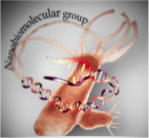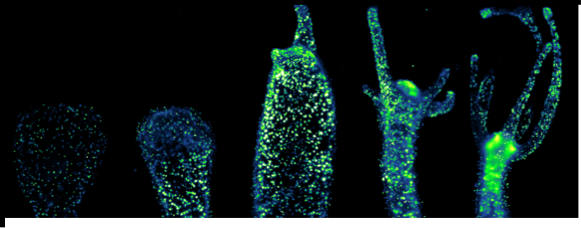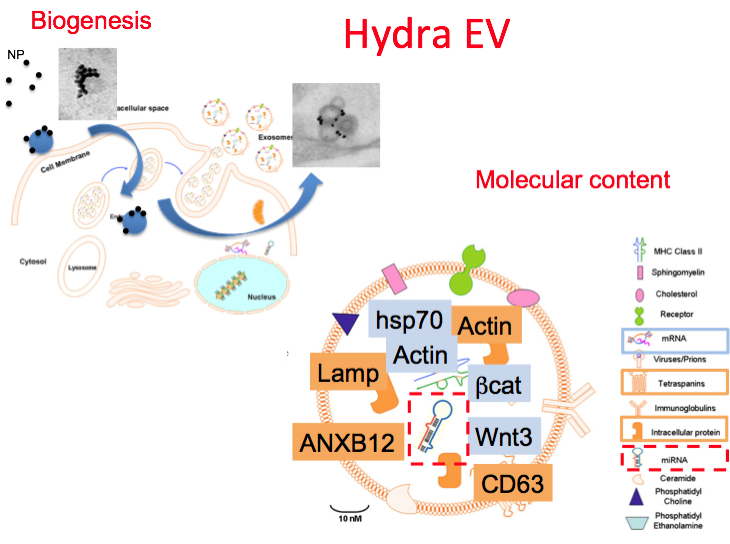


NanoBiomolecular Group
Istituto di Scienze Applicate e Sistemi Intelligenti “E.Caianiello”
CONSIGLIO NAZIONALE DELLE RICERCHE



NanoBiomolecular Group
Istituto di Scienze Applicate e Sistemi Intelligenti “E.Caianiello”
CONSIGLIO NAZIONALE DELLE RICERCHE



Extracellular vesicleS
Recent body of evidence demonstrates that extracellular vesicles (EVs) represent the first language of cell-cell communication emerged during evolution. In aquatic environments, transferring signals between cells by EVs offers protection against degradation, allowingdelivering of chemical information in high local concentrations to the target cells. The packaging of multiple signals, including those of hydrophobic nature, ensures target cells to receive the same EV-conveyed messages, and the coordination of a variety of physiological processes across cells of a single organisms, or at the population level,i.e., mediating the population’s response to changing environmental conditions.
We purified EVs from the medium of the freshwater invertebrate Hydra vulgaris, and the molecular profiling by proteomic and transcriptomic analyses revealed multiple markers of the exosome EV subtype, from structural proteins to stress induced messages promoting cell survival. Moreover, positive and negative regulators of the Wnt/β-catenin signaling pathway, the major developmental pathway acting in body axial patterning, were identified.Functional analysis on amputated polyps revealed EV ability to modulate both head and foot regeneration, suggesting bioactivity of the EV cargo and opening new perspectives on
the mechanisms of developmental signalling.
Our results open the path to unravel EV biogenesis and function in all cnidarian species, tracing back the origin of the cell-cell, cross-species or cross-kingdom communication in aquatic ecosystems
Go to: NANOMEDICINE
M. Moros, E. Fergola, V. Marchesano, M. Mutarelli, G. Tommasini, B. Miedziak, G. Palumbo, A. Ambrosone, A.Tino, C. Tortiglione. The aquatic invertebrate Hydra vulgaris releases molecular messages through extracellular vesicles. Frontiers in Cell and Molecular Biology. 2021, 9: 3425 Doi: 10.3389/fcell.2021.788117

Collaborations
Maria Moros, Instituto de Nanociencia y Materiales de Aragón(INMA), Zaragoza, Spain
Margherita Mutarelli, Istituto Scienze Applicate e Sistemi Intelligenti, CNR, Pozzuoli